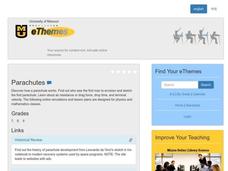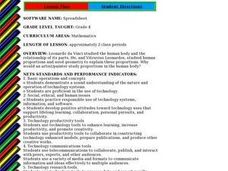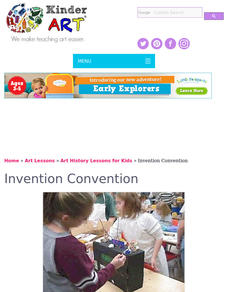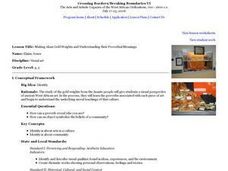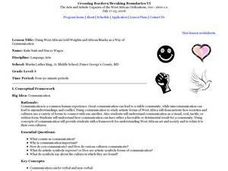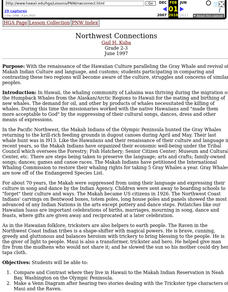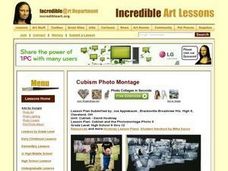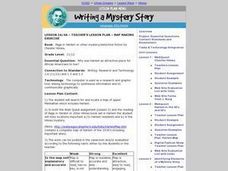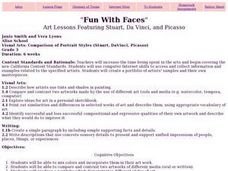Curated OER
Parachutes
Students examine how parachutes work, and research and discuss the first man to envision and sketch the first parachute. They analyze air resistance, drag force, drop time, and terminal velocity.
Curated OER
Body Proportion
Fourth graders measure the height and arm span of various classmates. They use a spreadsheet to design a graph that shows the class measurements from tallest to shortest in metric and standard systems.
Curated OER
Invention Convention
Fifth graders recognize the work of Leonardo da Vinci. They invent a new machine for the 21st century and make a model of the invention.
Curated OER
The Impact of The Sacking of Rome on The English Reformation
High schoolers explain the Sacking of Rome as a major event marking the culmination of the Renaissance Papacy. They explain the divorce of Henry VIII from Catherine of Aragon as the beginning of the English Reformation.
Curated OER
Research Project
Sixth graders use research, word-processing, graphic skills and a multi-media presentation. They complete a research project that meets the requirements for the Grade 6 Renaissance report.
Curated OER
Double, Double, Toil and Trouble: A Dual Exploration of Macbeth
Young scholars emulate a key practice of Renaissance theater: doubling. The goal of this lesson is for students to experience-to see, hear, and feel-the differences between characters. Each group presents scenes to the rest of the class.
Curated OER
Woman Holding Plum Blossoms
Students contrast and compare the definition of beauty in Tang dynasty China with that of America today in this high school Social Studies lesson. The lesson concludes with a small group activity.
Curated OER
The Flights Of The Phoenix
Students investigate the use of the Phoenix in Japanese and Chinese art while making connections to the use of the Phoenix in the book Fahrenheit 451. This instructional activity can be adapted for grades 8 through 11 but was originally...
Curated OER
Making Akan Gold Weights and Understanding their Proverbial Meanings
Students examine a variety of gold weights used by the Asante in West Africa. In groups, they discuss the purpose of the gold weights and practice saying proverbs associated with different pieces of art. To end the lesson, they...
Curated OER
Power and the Communication of Values in West African Art of the Past and Present
Ninth graders examine art from West Africa from the past and present. In groups, they compare their community to the one depicted in the artwork and note the similiarities. To end the instructional activity, they discuss the concept of...
Curated OER
Using West African Gold Weights and African Masks as a Way of Communication
Eighth graders discuss how communication, or lack thereof, can have either a favorable or detrimental effect on a community. They study and interpret proverbs as a means of teaching a lesson. Finally they discuss symbolism and design a...
Curated OER
House Keys: The Architectural Features of Victorian Homes and Buildings
Students analyze Victorian architectural patterns wit regard to materials, doorways, windows, towers, bays, roofs, and decoration. Students discern varying architectural traits by studying Victorian era pictures and drawings and using a...
Curated OER
What Makes the Writer Write
Your 11th and 12th graders are ready to critique society! Channel that inclination by studying a novel that offers social criticism of other eras (book recommendations included). This resource presents a well-thought-out overview of such...
Curated OER
Northwest Connections
Students compare and contrast where they live in Hawaii to the Makah Indian Reservation in Neah Bay, Washington on the Olympic Peninsula, then make a Venn Diagram after hearing two stories dealing with the Trickster type characters of...
Curated OER
Other Worlds: The Voyage of Columbus
Learners utilize Internet sites to explore and compare current ideas and opinions concerning the impact of christopher Columbus' famous voyage of 1492.
Curated OER
Social Studies - Guessing Game
Focus on a particular geographic location with this resource. Learners use their social studies textbook to look up information about a specific place. They write down a list of facts and read them to the class. Classmates guess which...
Curated OER
Cubism - David Hockney
Identify Cubist works (namely the works of Picasso and the Cubist-inspired works of David Hockney), then express or create a work showing a time frame.
Curated OER
Word Roots 5: NAT, TRACT, SEQU Advanced Puzzle 1, 2, & 3
Break down the connection between word roots and words with similar meanings with this resource. Learners use a list of words, a brief definition of each word, and twelve word roots with blanks next to them to fill in. They then fill in...
Curated OER
Word Roots 5: NAT, TRACT, SEQU Fill-in-the-Blanks Advanced
Explore word roots with this online resource. Learners fill in twelve blanks using a provided word bank and context clues. Since this is an online resource, participants can receive immediate feedback for their responses. You might use...
Curated OER
Map Making Exercise
Students complete a Web Quest in order to determine why Harlem was an attractive place for African Americans to live. They study a map of Harlem in the 1930's.
Curated OER
Fun With Faces: Stuart, Da Vinci and Picasso
Third graders conduct research and review art work to compare the styles of Stuart, Da Vinci and Picasso. They develop and compile a portfolio including masterpieces of these artists and original works. Students compose detailed...
Curated OER
Explorers of the New World
Students research explorers and explore how exploration affected the Western Hemisphere; students demonstrate competency in using multimedia encyclopedia and information software, and present PowerPoint presentation to class with two...
Curated OER
What Caused the Great Depression?
Analyze the many causes of major political, economic, and social developments during the 1920s and 1930s, with emphasis on the Great Depression. Read photographs from the 1920's and the 1930's, then write a brief explanation of what you...
Curated OER
Experiencing Japanese Feudalism
Young scholars identify that a system of feudalism similar to that of medieval Europe developed in Japan by 1300. Students identify the social hierarchy of feudal Japan. Young scholars identify what the cultural basis for the...
Other popular searches
- European Renaissance Lessons
- Harlem Renaissance Lessons
- Renaissance Lessons Plans
- Lessons on the Renaissance
- Europe Renaissance Lessons
- Italian Renaissance Lessons
- Harlem Renaissance" Lessons
- English Renaissance Lessons
- Renaissance Lessons in Art
- Northern Renaissance Lessons
- Enlish Renaissance Lessons


